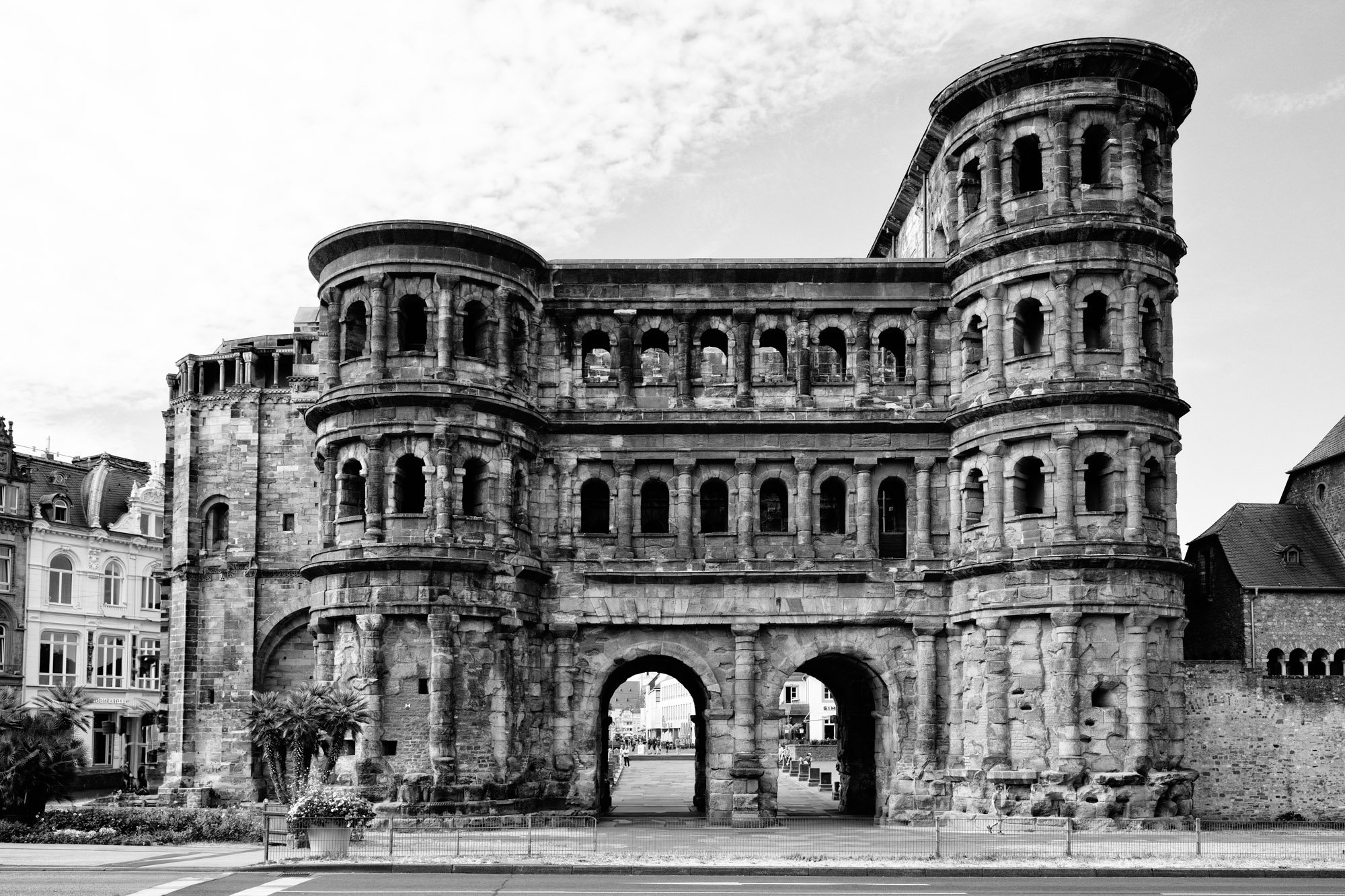Porta Nigra, Trier.
The Porta Nigra, located in Trier, Germany, stands as a testament to the city's rich history and Roman legacy. Built between 186 and 200 AD during the reign of Emperor Marcus Aurelius, it served as one of the four city gates of ancient Augusta Treverorum, the Roman name for Trier.
Originally named Porta Martis, meaning "Gate of Mars," the Porta Nigra was constructed using large sandstone blocks without mortar, a technique characteristic of Roman architecture. Its name was changed to Porta Nigra, or "Black Gate," in the Middle Ages due to the darkened color of its stone over time.
Throughout its existence, the Porta Nigra has witnessed significant events. In the 5th century, Trier fell under Frankish rule, and the gate was converted into a church dedicated to Saint Simeon. During this time, its distinctive upper stories were added, transforming it into a basilica.
In subsequent centuries, the Porta Nigra underwent further transformations. It served as a fortress, a monastery, and a barracks. However, by the 11th century, it had fallen into disuse and was gradually buried by layers of soil and debris.
In the 19th century, the Prussian government undertook efforts to restore the Porta Nigra to its former glory. The surrounding structures were demolished, and the gate was uncovered and meticulously restored to its original Roman appearance.
Today, the Porta Nigra stands as an iconic symbol of Trier's Roman past and is recognized as a UNESCO World Heritage Site. Visitors from around the world marvel at its imposing presence and architectural significance, making it one of the most popular tourist attractions in the region.


